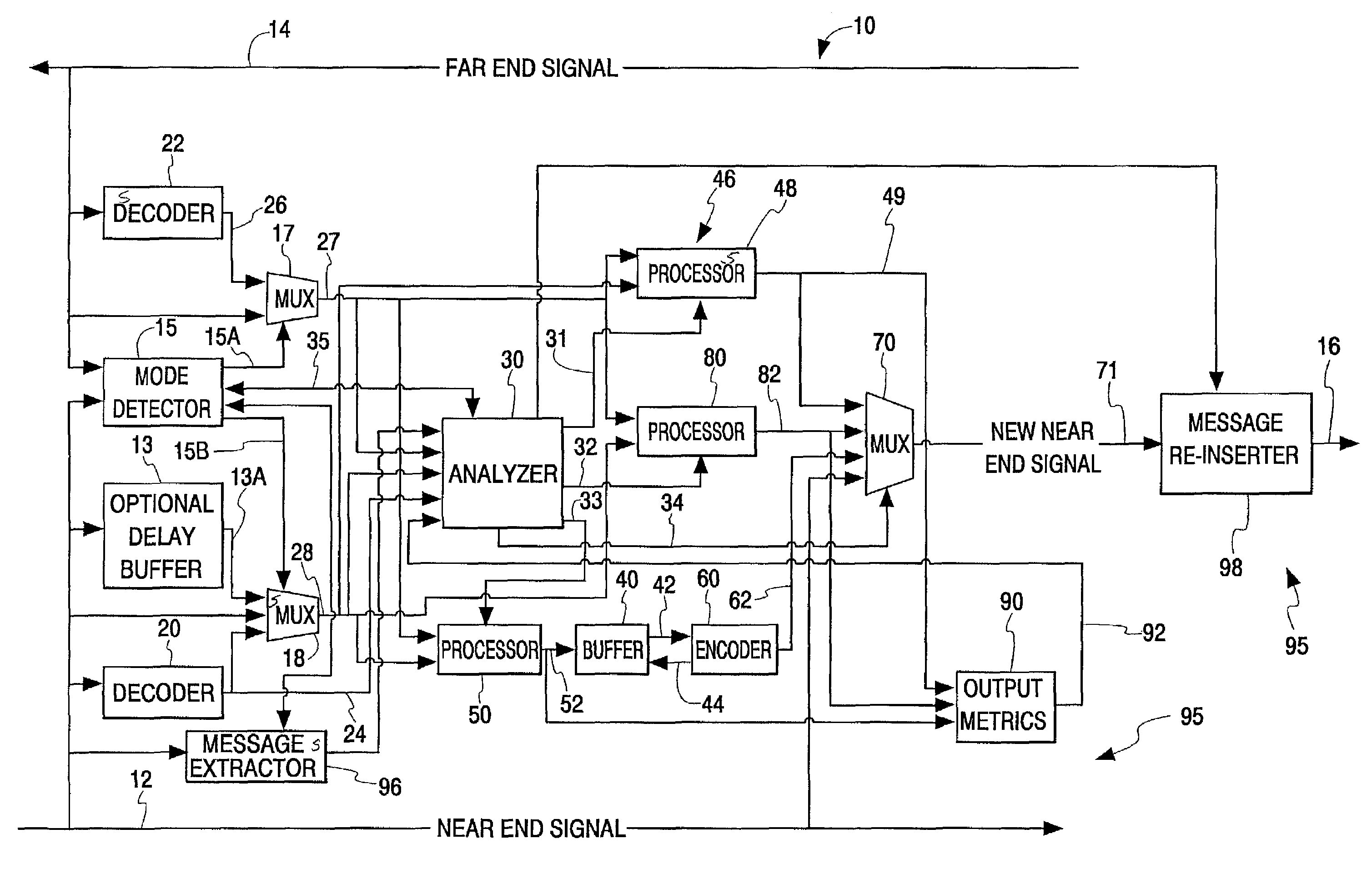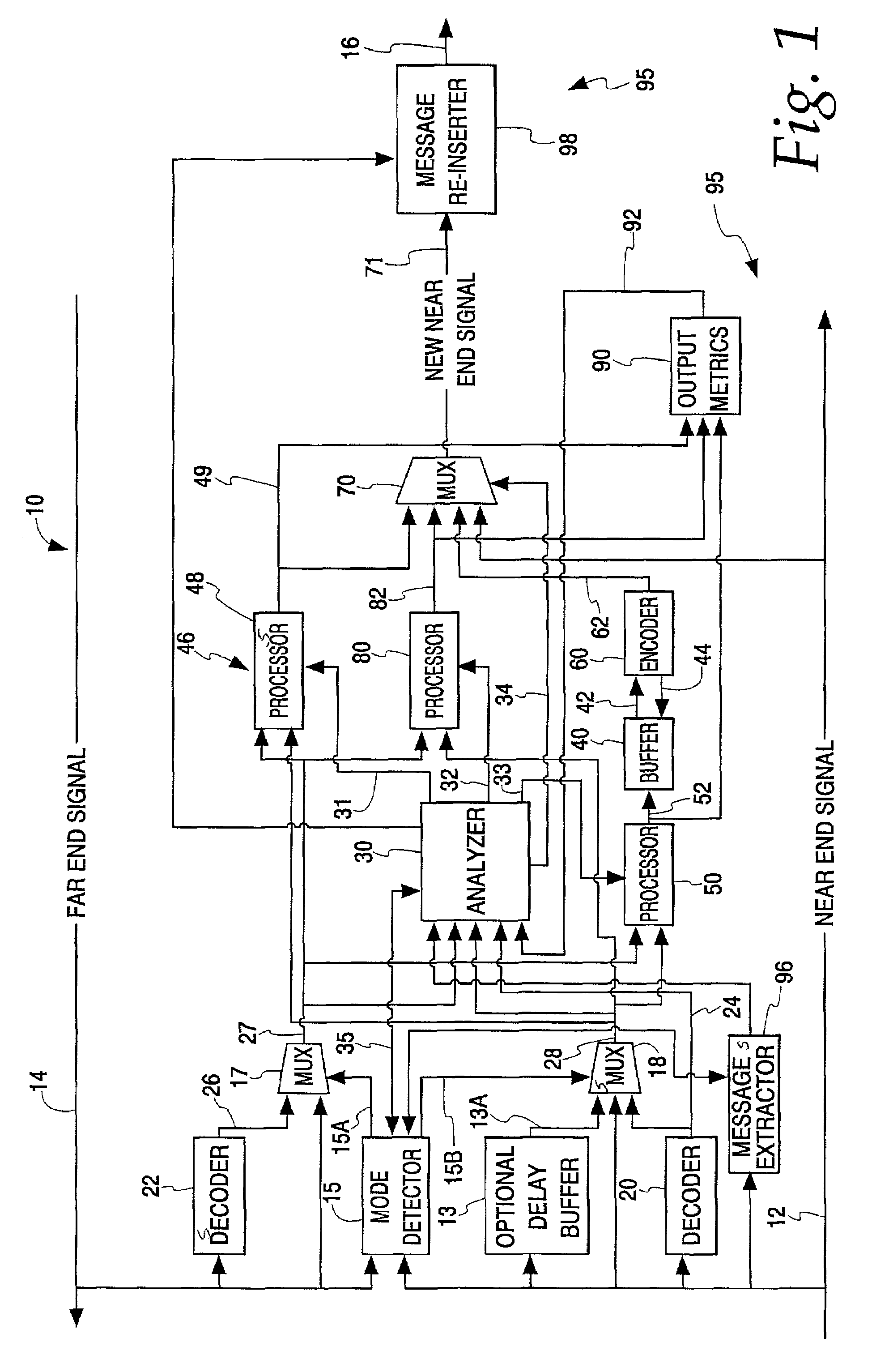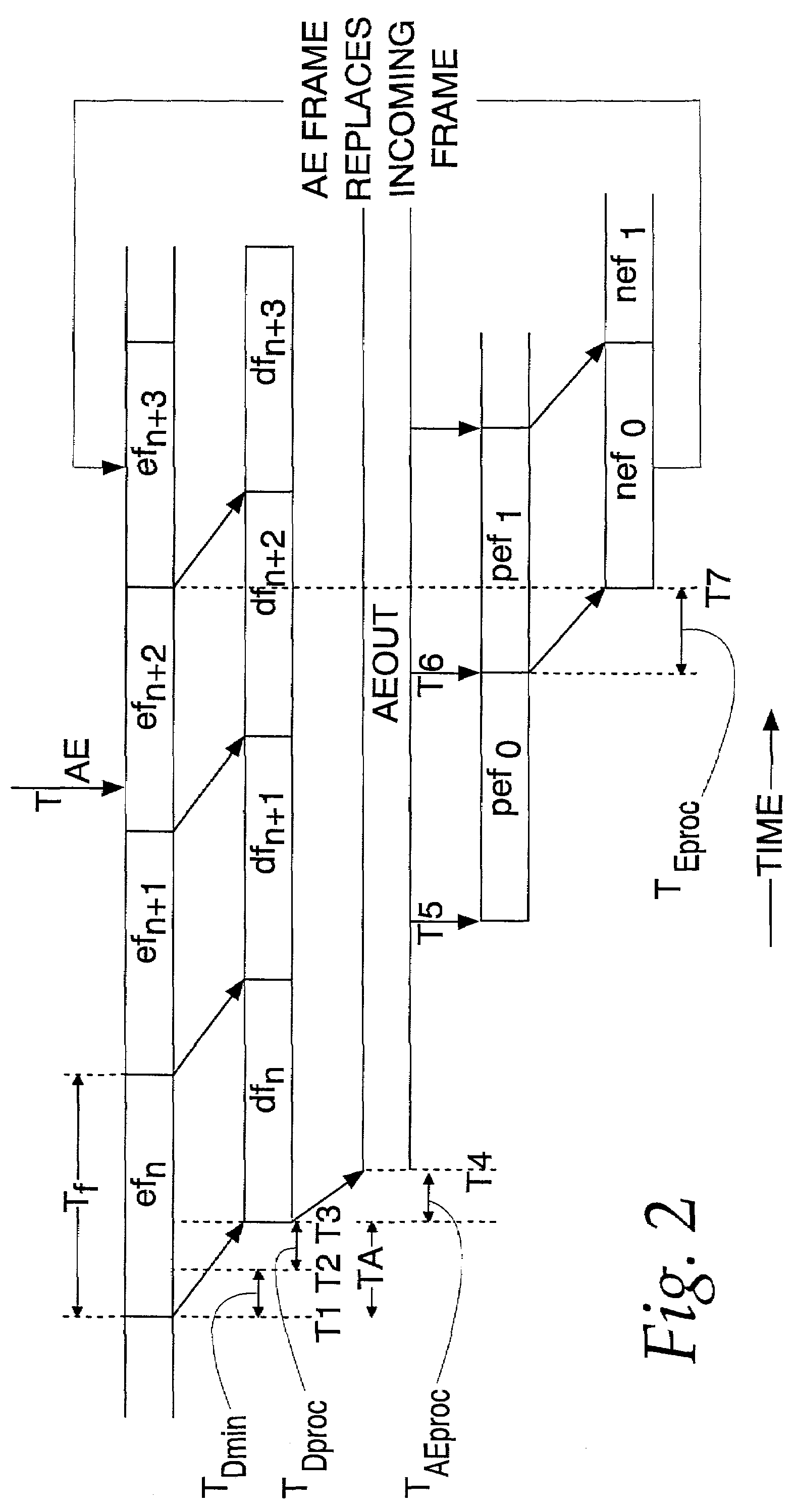Audio enhancement communication techniques
a communication technique and audio enhancement technology, applied in the field of voice enhancement, can solve the problems of reducing the use of vbe products in the traditional manner, affecting the quality of speech, so as to avoid the loss of speech quality due to tandem codecs and the sacrificing of voice quality
- Summary
- Abstract
- Description
- Claims
- Application Information
AI Technical Summary
Benefits of technology
Problems solved by technology
Method used
Image
Examples
Embodiment Construction
[0019]With the development of tandem-free operation (TFO) into the telephone network, an issue exists as to how to provide audio enhancements (such as level control, noise reduction and echo control) to highly compressed domain signals without suffering audio degradation due to additional vocoding stages (i.e., voice coder stages that compress data). The solution, which the preferred embodiment addresses, is to trade-off the expected enhancement of the audio feature against the detriment of the additional vocoder stage. The preferred embodiment describes a system which is responsive to both the weakly compressed and highly compressed data. This system can further determine the type of audio enhancement that is best suited to that data, and then provides that enhancement to the data. The format of the egress data matches that of the ingress and may have undergone linear AE processing, coded domain processing or none. (Note that linear AE processing applied to highly compressed data r...
PUM
 Login to View More
Login to View More Abstract
Description
Claims
Application Information
 Login to View More
Login to View More - R&D
- Intellectual Property
- Life Sciences
- Materials
- Tech Scout
- Unparalleled Data Quality
- Higher Quality Content
- 60% Fewer Hallucinations
Browse by: Latest US Patents, China's latest patents, Technical Efficacy Thesaurus, Application Domain, Technology Topic, Popular Technical Reports.
© 2025 PatSnap. All rights reserved.Legal|Privacy policy|Modern Slavery Act Transparency Statement|Sitemap|About US| Contact US: help@patsnap.com



